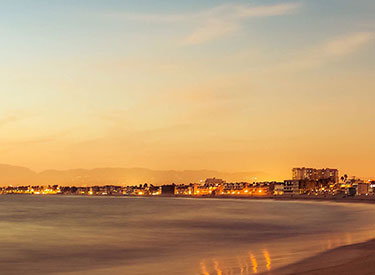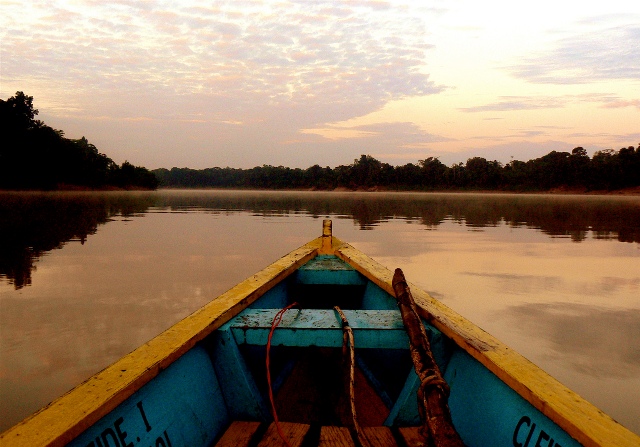


You could crash-land almost anywhere in Bolivia and find yourself in one of the most inimitable environments on earth; the landscape stretches across vast planes in the south, peaks along the Andes in the west, and dives into the low-lying wetlands of the Amazon Basin in the east. Not only is it a striking and sometimes formidable stage, it has hosted some of the most incredible cultural power-plays in all the Americas.
The salt flats of Salar de Uyuni are large, white, flat, and mind-bendingly beautiful. At 3,656m above sea level, and stretching across an expanse of 10,500 square kilometres, the flats have become a favourite for travellers and photographers.
There is no doubt this unearthly landscape is the crowning glory of the south west, but the region also offers plenty of other unbelievable gems, including emerald and blood-red prehistoric lakes strewn with flamingos and an antique ‘train cemetery’ – left to rust after the collapse of the mining industry in the 1940s, they now create an utterly breathtaking juxtaposition against the blinding white expanse in which they sit.
If you are approaching from the south, the slow-paced city of Tupiza is the perfect place to catch your breath before launching into the apocalyptic mars-scape of the south west circuit. The eerie rusty-coloured hills that surround are also said to be where the infamous outlaws Butch Cassidy and the Sundance Kid met their demise, and those who wish, can tour the area on horseback. .
At 4090 metres above sea level the worlds highest city of Potosi sits, humbled in the shadow of Cero Rico. It was in 1544 a local native conversed with a Spaniard about his brother’s discovery of silver in the mountain that shadowed his town. By 1546 the city of Potosi was officially founded by Spaniard Jaun de Villerod and a silver mine was churning into the mountain they now referred to as Cerro Rico, or, ‘Rich Mountain’.
While outside the mines the Spanish were extolling the virtues of Christianity, inside they introduced the local labour force to Tio, or, ‘Devil’, who punishes those who do not procure adequate silver from the mines. It would appear that no amount of silver was ever enough for Tio, who ‘ate’ an estimated 8 million African and Indian workers from 1556-1780.
During this period, Cerro Rico, with the help of Tio, transformed Potosi into one of the world’s largest and wealthiest cities. Silver drawn from the mountain provided Spain with the means of expanding an empire and paying debts to France and England – stimulating economic rise throughout Europe.
Today, it is not only the thin of the air, but the weight of this reality that dizzies the mind as you walk the picturesque cobble stone streets through this world heritage site. Although it is all but depleted of silver and most valuable minerals, the mine is still in operation today, with a vast majority of the work still being carried out by chisel and hammer.
For those with the lung capacity and who don’t suffer from claustrophobia, it is possible to go down into the mines as part of a tour. It is customary to buy the miners a gift from the miners’ markets along the way: coca leaves, soft drink, cigarettes or dynamite.
Tip –
You must go to the Museo de la Casa la Monedo while in Potosi – not only to satisfy your coin-making curiosities, but because coin making and history are one and the same in this city. Potosi produced all of Spain’s silver coins until the mountain was depleted of its silver deposits in the early 19th century; now Bolivia buy their currency from Spain.
The city’s coat of arms still adorns many of the buildings in town: “I am rich Potosi, treasure of the world. The king of all mountains and envy of all kings.”
Considered the most beautiful city in Bolivia, Sucre rose to prominence as a result of the wealth generated by the silver mined from nearby Potosi. The result is neo-classical city of well planned streets and perfect white-wash houses, stunning churches and tranquil squares, and while La Paz is now the seat of government and treasury, Sucre is still Bolivia’s judicial capital.
The city has a lot to offer in the way of tourist attractions, including the close by dinosaur tracks (Cal Orck’o), but it is the ultra relaxed atmosphere of the city which seduces visitors to stay longer than planned – Sucre has long been considered the educational heart of Bolivia, and for tourists this is no different, with many staying weeks to study Spanish at the many language schools and practice while milling about the plethora of pleasant white-wash courtyards.
The administrative capital of Bolivia, La Paz clings to the side of a canyon and falls from around 4000m above sea level, to the shanty towns at its base – around 3000m above sea level. The bad news is that to explore the city on foot at such altitude is literally breathtaking and visitors generally need a day to acclimatise. The good new is, however, once you have, you will find an abundance of fantastic cafes, restaurants and other treasures hidden around the city. For something you won’t find at home, head to the Witches’ Market where you will find everything from llama foetuses to llama knit sweaters.
Another major drawcard to La Paz is its accessibility to Rurrenabaque, the launch site for tours around the Amazon basin where you can tour the rivers in an attempt to spot the elusive pink dolphin. The flight takes an hour and drops several thousand metres.
Highlight –
The World’s Most Dangerous Road, so called for the volume of transporters that have slipped over the edge, is a treat for anyone with an adventurous spirit. A strong tourist industry has grown on the back of its reputation by operating downhill mountain biking. Starting above 4000m, and often in the snow, you race down the dirt road cut into an often shear cliff and find yourself in a tropical environment at the end – and depending of the operator, relaxing by a swimming pool.
If there is a time not to skimp on a tour operator, it’s when that operator facilitates your hurtling down a dirt road where the only thing keeps you on it (and not plummeting several hundred metres) is the quality of your brake pads.
Laying 3,420m above sea level, between the Bolivian and Peruvian boarders, Lake Titicaca is the second largest freshwater lake in South America.
Copacabana is the largest town along the lake’s edge on the Bolivian side. Although perhaps too touristy for some, it is nonetheless a very pleasant and beautiful town. Nestled between two hills, there is no shortage of restaurants selling fresh trout from the lake and stalls set up by talented artisans from seemingly all over the Americas. Once again, the altitude may wan your appetite for exercise, however, it is well worth sucking it in and climbing one of the surrounding hills for a sunset view over the lake.
With a population of around 5000, Isle de Sol is one of the largest islands on the lake. The ‘Island of the Sun’ is believed by the Incas to be the birthplace of their gods, and surely there is a magic to it.
It isn’t called Island of the Sun for nothing; the altitude may keep Lake Titicaca at a chilly 10 to 14 degrees, but there is little shelter from the sun on the island and you would be well advised to ensure you carry plenty of water and sunscreen.
There are no roads, but a network of walking tracks makes exploration easy. It is possible to see the main archaeological sites in a day, but to truly experience the majesty of the Isle de Sol, it is best to spend the night and perch yourself at the island’s edge to savour a cerveza as the sun sinks into the sapphire lake. Another major drawcard to La Paz is its accessibility to Rurrenabaque, the launch site for tours around the Amazon basin where you can tour the rivers in an attempt to spot the elusive pink dolphin. The flight takes an hour and drops several thousand metres.
Find out more from your local, personal travel manager.